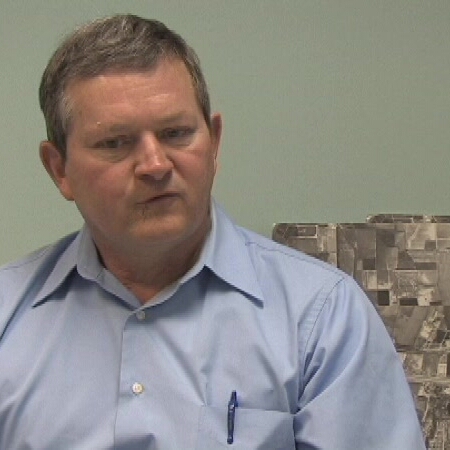A "good" rate/fee structure will accomplish the following:
- Meet all operating and maintenance expenses
- Provide reserve funds for capital improvements, repairs and replacements, debt service and emergencies
- Provide revenue stability
- Be fair and equitable
- Be affordable for the majority of customers
- Encourage responsible water use
- Provide for future incremental increases
Many utilities struggle with rate-setting and with gaining public acceptance for rates and fees. Rates are often determined by a political process that is not based on business reality. Such rates will inevitably lead to under-investment in infrastructure and perhaps even an inability to meet current operating expenses.
Political expediency often results in a "willingness to charge" problem
in which officials and managers become over-sensitized to their customers'
desires to keep rates low or general unwillingness to pay for services.
However, willingness to pay is not the same as ability to pay. For this
reason, it is important to assess your customers actual ability to pay.
This can be done with census data on annual median household income (AMHI)
in your area. If data is not available for your area or is not specific
enough to your customers, you may need to conduct your own income survey
or base your assessment on other knowledge of the economic condition of
your customers. When ability to pay is assessed objectively, it may be
necessary for the utility to develop programs to assist low-income
customers. Some may see this as unfair, but setting a rate structure
geared to the customers with the lowest income will often result in
insufficient revenue and may not be in the best interests of the
community as a whole. If rates are set too low to cover all of your
costs, everyone suffers in the long run. It is essential to find a way
to set a rate/fee structure that is adequate to cover expenses. For many
utilities that may mean devising a program to assist low-income customers.
When a utility adopts Asset Management practices, the rate/fee
structure may need to increase. This will occur if the utility
must move from being under-funded (i.e., collecting insufficient
revenues to cover all expenses) to being properly funded. Understanding
your customers' ability to pay will help you defend your rates and fees and to make decisions about whether certain income groups may need to be subsidized. A solid Asset Management program will give you the tools to defend the rates you set. Asset Management brings transparency to the process so that the basis for rates is clear. The more clearly the rates can be defended, the more likely they are to be accepted by the public. The more you inform and involve your customers in understanding how you provide the benefits and services they are receiving, the more they will support you. Generally, once people understand what they are getting and see that their money is being spent responsibly, they will support the rates. This support, in turn, will give elected officials a higher willingness to charge.
A good rate analysis must start with good data on costs and future plans. It is therefore imperative that the utility have a budget and a good record-keeping system for tracking costs. Without good information about your current costs, you will not be able to project future costs with any confidence.
Listed below are 10 suggested steps for an effective rate-setting process. These steps are not meant to be definitive, but rather suggest issues that need to be considered and data that needs to be gathered.
- Determine your costs.
Your budget and record-keeping
system should track costs in meaningful categories. It is helpful
to separate operations costs into fixed (those costs that don't change with the amount of water produced or treated) and variable (those costs that go up when you produce more water or treat more wastewater).
- Determine your revenues.
It is helpful to understand how much of your revenue comes from usage rates vs. other fees.
- Determine your reserve needs.
You will consult your capital improvement plan, your repair and replacement schedule and your debt obligations for this information.
- Determine your current financial position.
Do you have a deficit? If you have not met expenses in the past, you will have to correct for this in your new rates.
- Determine revenue required for the next 5 years.
This will be based on your past costs, but don't forget to take
into account future growth and inflation.
- Gather information about your customers.
This information is at the heart of any rate-setting process. Knowing how many customers fall into various usage categories will make it possible for you to set a rate/fee structure that maximizes your revenue, while making sure that the cost is spread equitably among the customers. For example, if you find that 90% of your customers use below 4,000 gallons per month, it will not gain you much revenue to include 4000 gallons in your base fee and start charging incrementally above 4000 gallons.
- Gather information about production and use.
These data will tell you whether you are "losing" water due to leakage or theft. Or you may simply be providing water to community buildings without charge. In any case, this water costs money to produce and must be paid for by your customers. If your utility does not have meters, you cannot set a meaningful rate.
- Design a rate/fee structure.
There are as many different structures as there are people with imagination designing them. However, an effective rate will cover all costs; will spread the cost of operations equitably across all classes of customers; and will encourage conservation.
- Implement the rate.
Do not under-estimate the importance of "selling" the new rate/fee structure to your customers. If you have already involved your customers in your Level of Service Agreement, it is a natural step to let them know what the services will cost.
- Review your rates regularly.
Rates should be reviewed annually.
|
If you manage your assets related to the fact that they are truly community
assets,...you can build rate capacity.
--Jim Smith, Louisville, KY
|
FS-13

|
There are many sources of rate setting assistance, including trainings and free rate setting programs. Any approach that includes all costs of operation; reserve accounts for capital improvement, debt service, repairs and replacements, and emergencies; and considers conservation or other utility goals is acceptable. Appendix E lists some resources for assistance with rate-setting.






